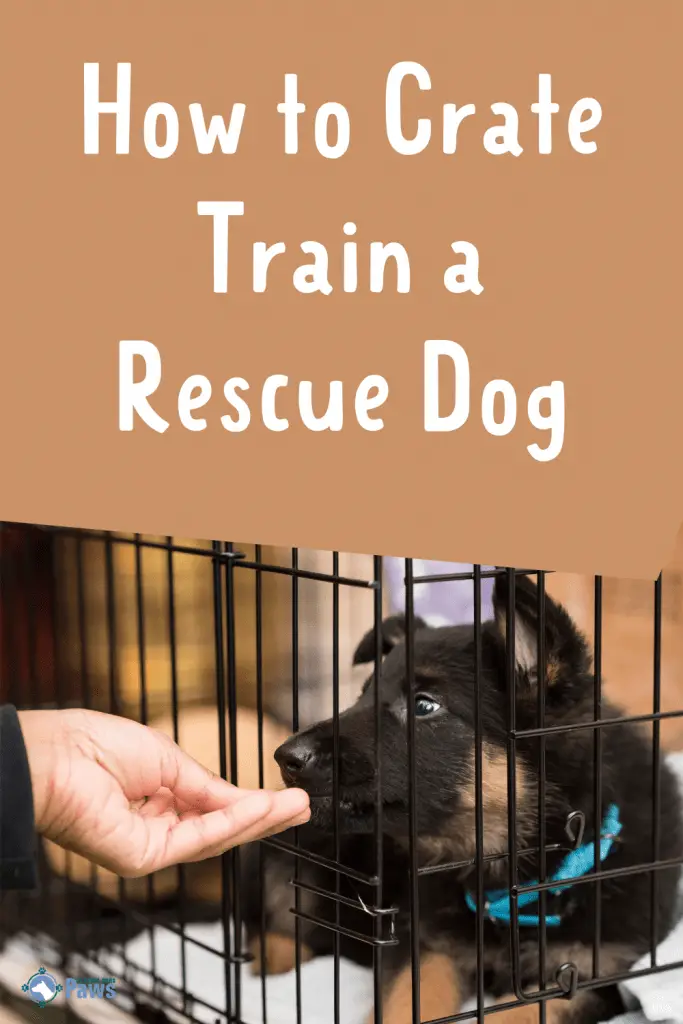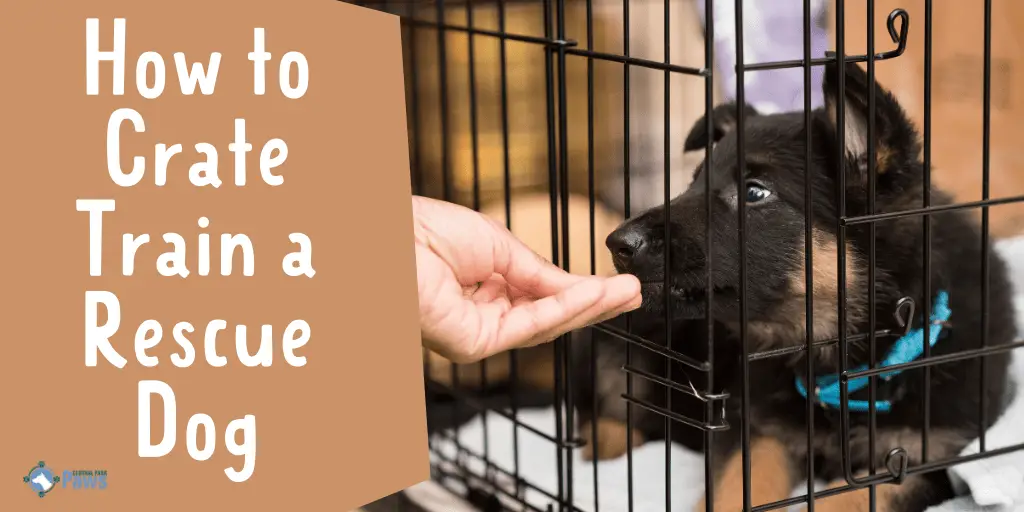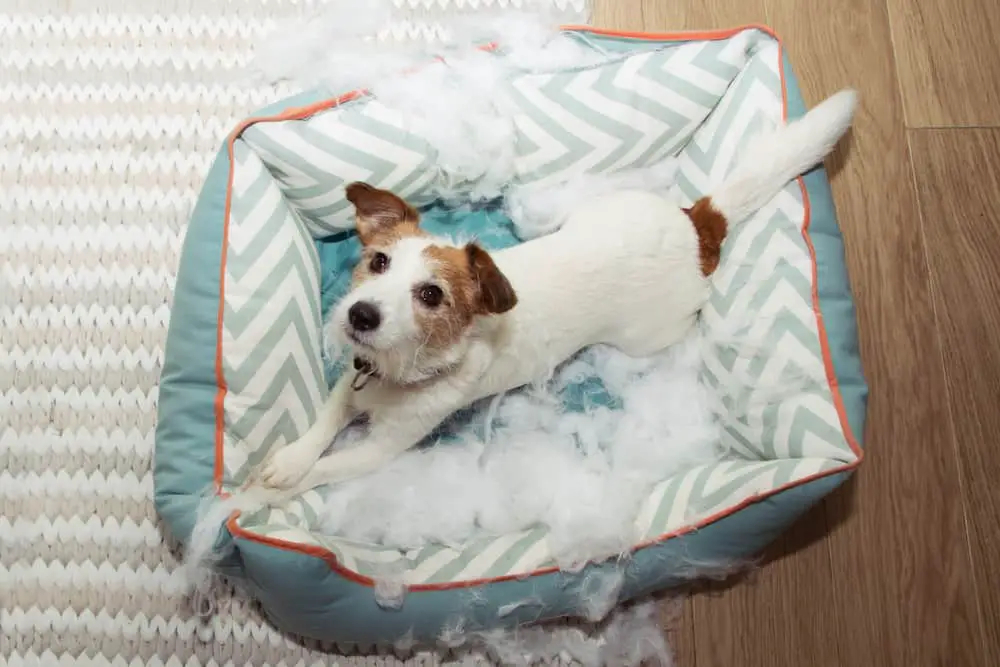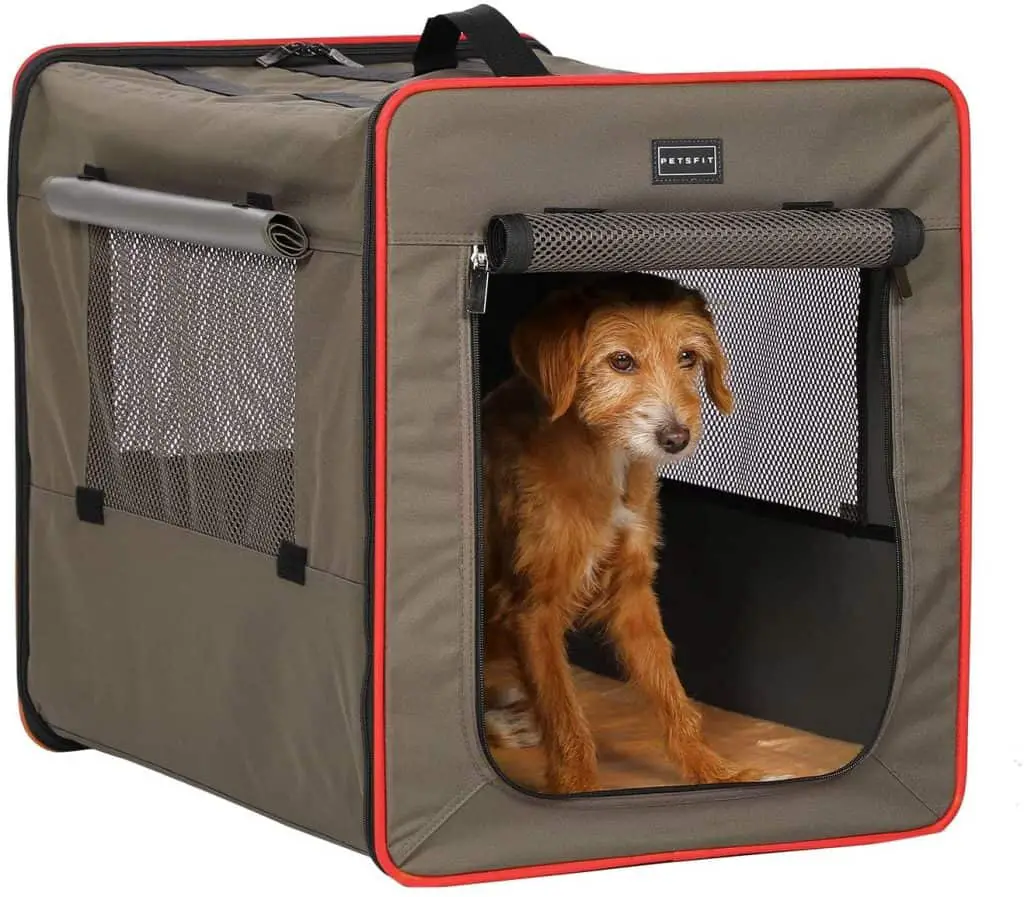Having fostered rescue dogs for over 10 years, I understand the importance of crate training your rescue dog.
However, knowing how to crate train a rescue dog is not always easy, as it can be more challenging at times than crate training a puppy.
Crates are like dens and can provide a source of security and comfort[1].
Plus, crates can keep your dog and home safe from harm while they are learning the house rules.
However, if crates are misused, as they sometimes are before rescue dogs find a safe and loving forever family, crate training can be challenging, yet no less important.
Whether I kept them or adopted them out, all of my rescue dogs were crate trained.
And in a multi-dog household, crate training is a requisite until the dogs are comfortable with one another.
Importance of Crate Training your Rescue Dog
There are several reasons why it is essential to crate train your rescue dog.
Crate training is a lot more than avoiding chewed furniture; it also helps keep your dog safe and contained while you are gone or when traveling in a vehicle[2].
Plus, if a dog has to stay overnight at a boarding facility or vet hospital they may need to be crated there, too. However, if your dog is not crate trained, this can cause serious stress and anxiety for your dog.
Conversely, if your dog is relaxed in a crate they may find being crated in unfamiliar areas more comfortable.
Also, within the home, there are several situations in which crates come in handy, like when you are gone or at night when you are sleeping.
Or, if your dog is like Ginger and has food aggression, feeding your dog in their crate may keep other animals safe in your home.
And of course, if your new rescue dog is not housetrained, having them crate trained will help that too.
Though not as vital, crate training can also help provide your dog with a quiet place to go and rest. This is especially important in busier households.
Things to Remember When Crate Training a Rescue Dog
How you crate train your rescue dog is vital to its success.
The number one thing you should always remember is that the crate should never be used as a punishment.
For crate training to be successful, the crate must always represent something positive.
Also, never force your dog in their crate, this will only reinforce negative feelings about it.
Other factors to think about when crate training your dog are:
Location of the Crate
You will want to keep the crate in an area where the family is; remember dogs are pack animals and want to be with the family.
Which may mean you will need two crates, one for the bedroom and one for the main living area.
For more information, read our article on where to put a dog crate in your house
Crate Style
There are a few different crate styles out there, such as soft-sided ones like the Petsfit Soft-Sided collapsable crate, wire crates, heavy duty hard-sided crates, and crate furniture.
However, until your dog is fully crate trained, choosing a sturdy option is best.
Also, when choosing the crate style, keep in mind where you will be using it.
For example, I have soft-sided crates when camping because they are light-weight and easy to fold up, but at home, I have furniture crates for everyday use and wire crates for dogs new to crate training.
Crate Size
Choosing the right size crate for your dog is very important.
If your rescue dog is not housebroken, choosing a larger crate may not be the best choice unless you put in a divider.
However, if your dog is housebroken and they will be in the crate for a few hours at a time, then a larger crate may be more comfortable.
The minimal size for a crate must allow your dog to stand and turn around comfortably.
How to Crate Train a Rescue Dog
Step 1 – Choose a crate; if your dog was with a foster family, ask which style they use, since using a similar one may make it more comfortable for the dog.
If the dog is housebroken, including a bed or pad will make the crate more comfortable.
Step 2 – Set the crate up and place a fun toy or treats in there, leaving the door open.
Step 3 – Call your dog over to the crate and show them the fun surprises inside.
- If they go into the crate for the treats, provide calm praise and pop more treats in through the crate openings.
- Do not shut the door at this time; it is essential to do this in baby steps to keep training positive.
- If the dog does not go in the crate and seems scared to go near it, start gently tossing treats towards your dog to make coming near the crate positive.
- Every dog is different, especially when it comes to rescue dogs, so where you start your crate training may vary from one dog to another. One of my fosters was on the feral side and needed to be praised for just looking at the crate.
Step 4 – After your dog is calm about going into their crate to retrieve treats and isn’t acting skittish or darting out, close the door behind them, then reopen it immediately.
Give them a treat and praise after opening the door, but while they are still inside.
Step 5 – Build on the amount of time your dog is in their crate; at first, it will be seconds then will evolve into minutes. Also, you will want to start distancing yourself from the crate in slow increments.
In the beginning, stay within sight of the kennel then, as long as they are comfortable, you can eventually leave the room.
When building on time and distance from the kennel, do not go too fast too soon. It is essential to only go to the next level if the rescue dog is calm and comfortable.
Step 6 – When your dog goes into the kennel on its own start to give this action a command, for example, “Kennel Up” or “Quiet Time,” then praise and treat the behavior.
If you are using clicker training, that too will help reinforce crate training.
Step 7 – When your dog comes out of the kennel, they also need to be calm. You don’t want your dog to start shooting out of the kennel as soon as the door is open. It is important to wait until your dog is calm before letting them out.
Letting your dog out of the kennel is an important step when crate training.
For example, if you are traveling and open the crate door, the last thing you want is your dog bolting out unexpectedly.
Also, it is best to give your dog a release command to let them know when to come out.
Eventually, your dog will be able to stay in the crate even if the door is open until you give your release command.
Because I am not creative I use the word “Release,” which is also what I use when releasing them from a stay.
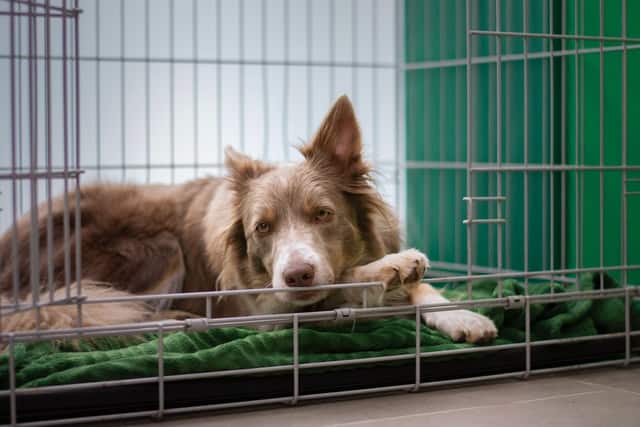
Crate Training Tips
- Patience is an absolute necessity when it comes to crate training a rescue dog. Though some dogs love their crate and immediately take to it, some find the confinement threatening and scary.
- Keep the environment calm; you don’t want your rescue dog startled when near or in the crate, as it may cause your dog to associate it as a scary place.
- I like to randomly drop treats in the crate so that the rescue dog will start checking the crate randomly for yummy things; this will reinforce your dog’s interest in going into the kennel.
- Use calm, confident praise. This is not a high-energy exercise. Crates should be associated with positive feelings[3], not as a place for excited energy.
- While building on the amount of time your dog is in the kennel, this is an excellent opportunity to give them a safe chewy if you are nearby to keep an eye on them.
For example, you are watching your favorite TV show and the kennel is near where you are sitting.
Ask your dog to go into the crate and give them a chewy.
This will help keep your dog occupied and make extending the time in the crate easier.
Conclusion
Crate training a rescue dog can be challenging at times, but it is well worth the time and patience once it is done.
Having a crate-trained dog is something that will benefit your rescue dog for their whole life.
Crates will not only keep your dog safe, but it will also give your rescue dog their own quiet place they can go when tired or even when scared.
Rescue dogs can be a lot of work, but the reward of watching them develop and grow is well worth the patience required upfront.
FAQs
How Long Does It Take to Crate Train a Rescue Dog?
This is a question I have been asked numerous times, and unfortunately, there is no one answer other than:
It depends on the dog.
I have had rescue dogs take to the crate the same day I brought them home and I’ve had dogs that took over a week to be comfortable with going into a crate.
Resources
- https://www.petmd.com/blogs/purelypuppy/lradosta/2012/apr/safe_places_and_confinement_anxiety-14090
- https://www.akc.org/expert-advice/home-living/dog-seat-belts-what-you-need-to-know-to-keep-your-dog-safe/
- https://www.nationalgeographic.com/animals/article/animals-dogs-emotions-pets-evolution
